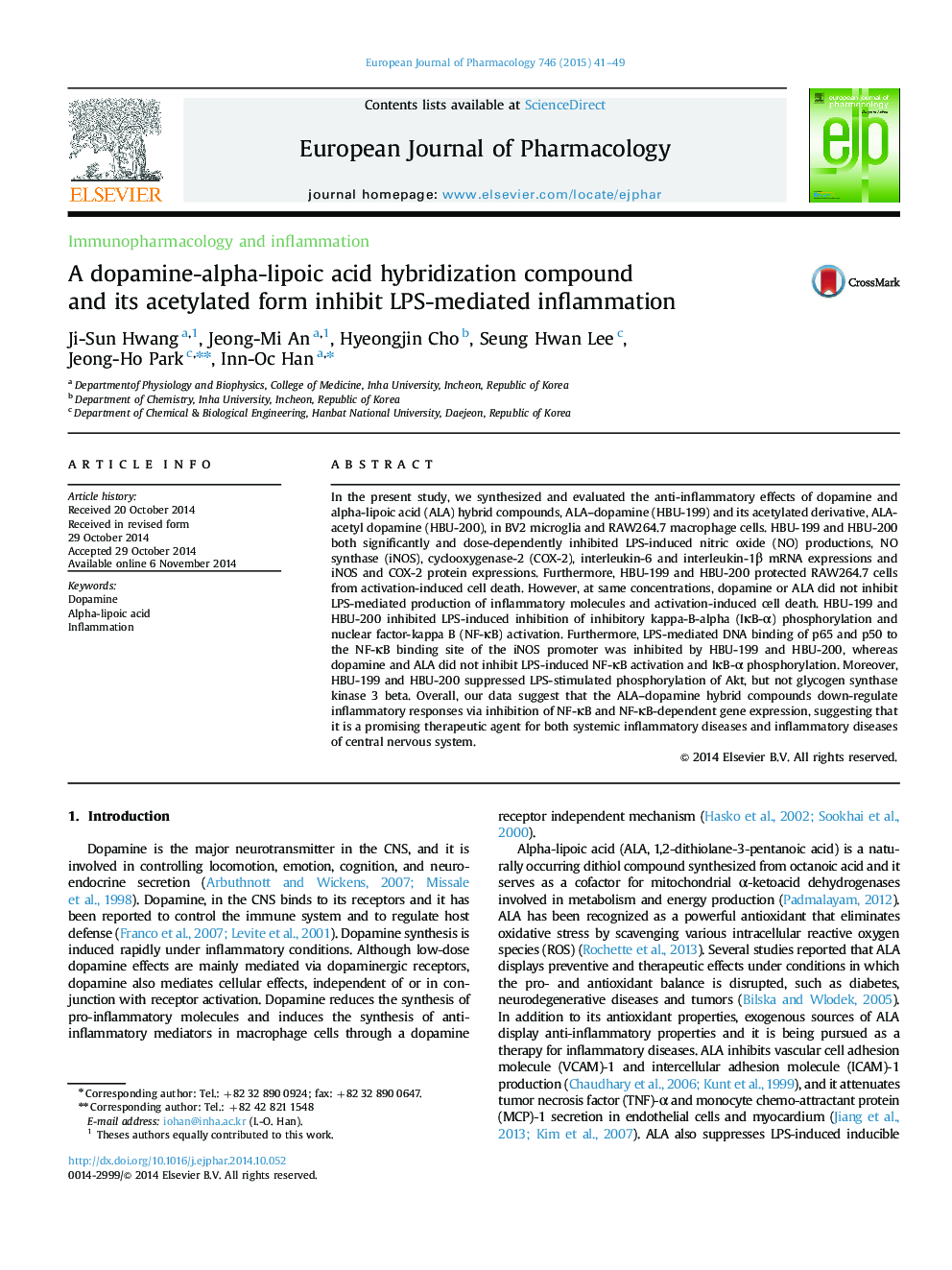| Article ID | Journal | Published Year | Pages | File Type |
|---|---|---|---|---|
| 2531582 | European Journal of Pharmacology | 2015 | 9 Pages |
In the present study, we synthesized and evaluated the anti-inflammatory effects of dopamine and alpha-lipoic acid (ALA) hybrid compounds, ALA–dopamine (HBU-199) and its acetylated derivative, ALA-acetyl dopamine (HBU-200), in BV2 microglia and RAW264.7 macrophage cells. HBU-199 and HBU-200 both significantly and dose-dependently inhibited LPS-induced nitric oxide (NO) productions, NO synthase (iNOS), cyclooxygenase-2 (COX-2), interleukin-6 and interleukin-1β mRNA expressions and iNOS and COX-2 protein expressions. Furthermore, HBU-199 and HBU-200 protected RAW264.7 cells from activation-induced cell death. However, at same concentrations, dopamine or ALA did not inhibit LPS-mediated production of inflammatory molecules and activation-induced cell death. HBU-199 and HBU-200 inhibited LPS-induced inhibition of inhibitory kappa-B-alpha (IκB-α) phosphorylation and nuclear factor-kappa B (NF-κB) activation. Furthermore, LPS-mediated DNA binding of p65 and p50 to the NF-κB binding site of the iNOS promoter was inhibited by HBU-199 and HBU-200, whereas dopamine and ALA did not inhibit LPS-induced NF-κB activation and IκB-α phosphorylation. Moreover, HBU-199 and HBU-200 suppressed LPS-stimulated phosphorylation of Akt, but not glycogen synthase kinase 3 beta. Overall, our data suggest that the ALA–dopamine hybrid compounds down-regulate inflammatory responses via inhibition of NF-κB and NF-κB-dependent gene expression, suggesting that it is a promising therapeutic agent for both systemic inflammatory diseases and inflammatory diseases of central nervous system.
